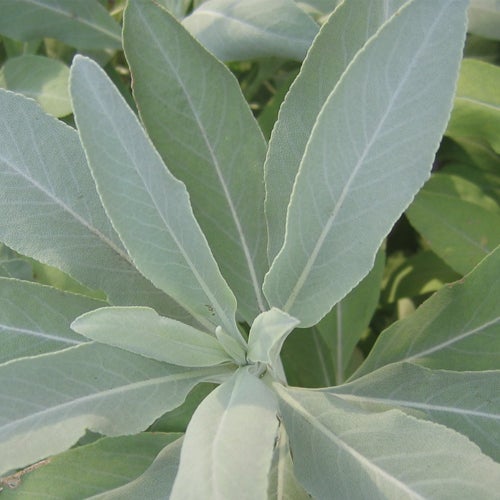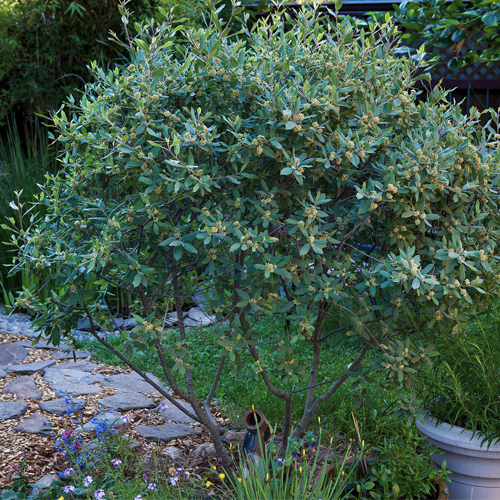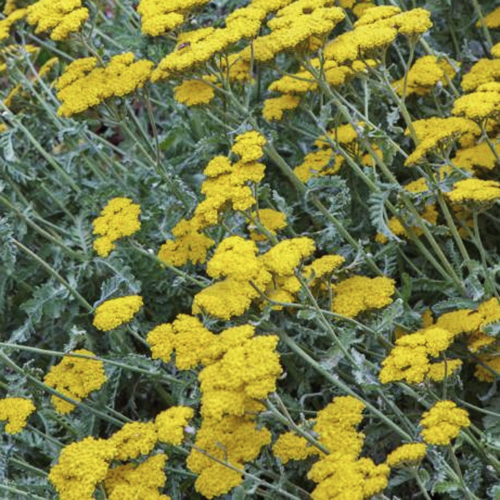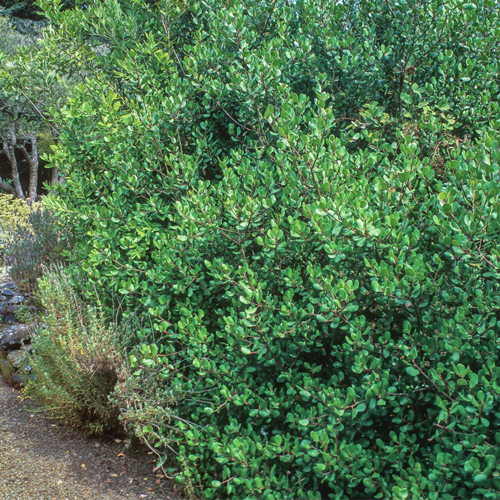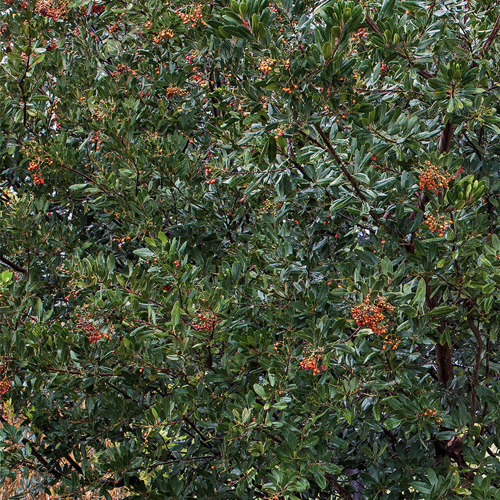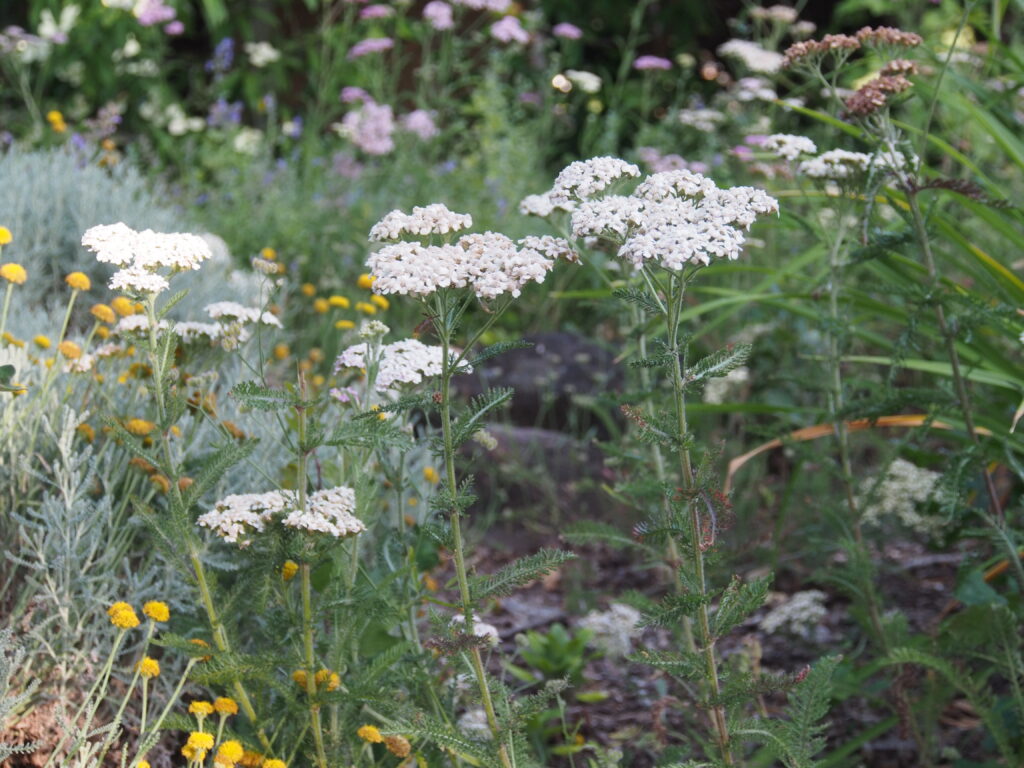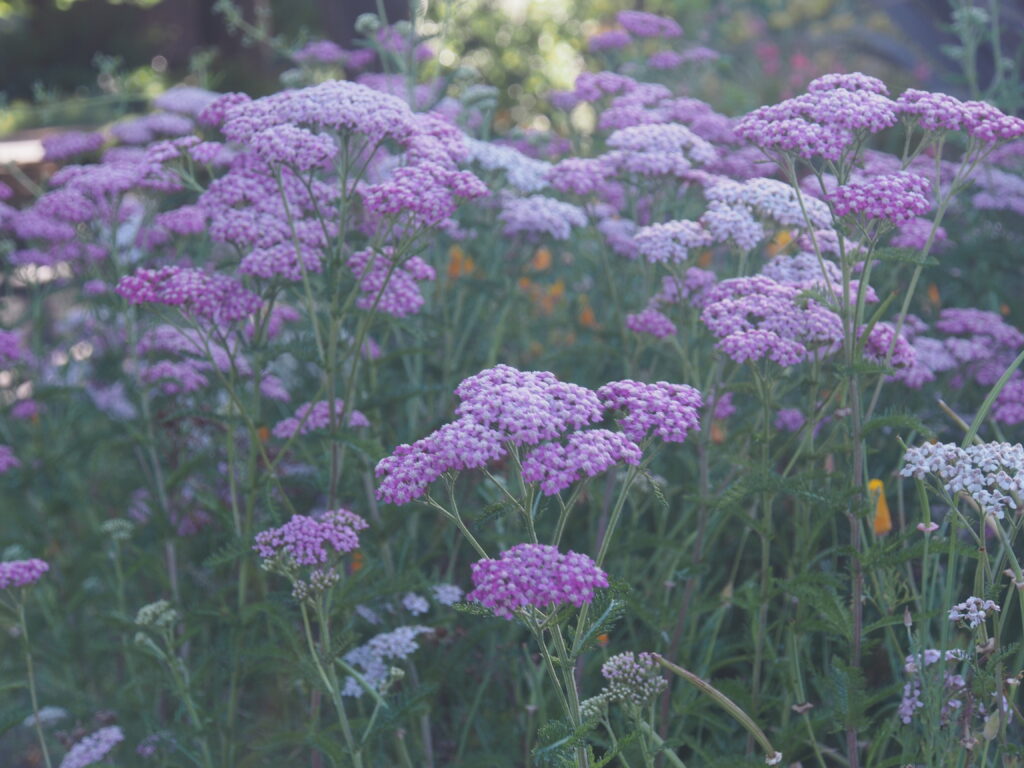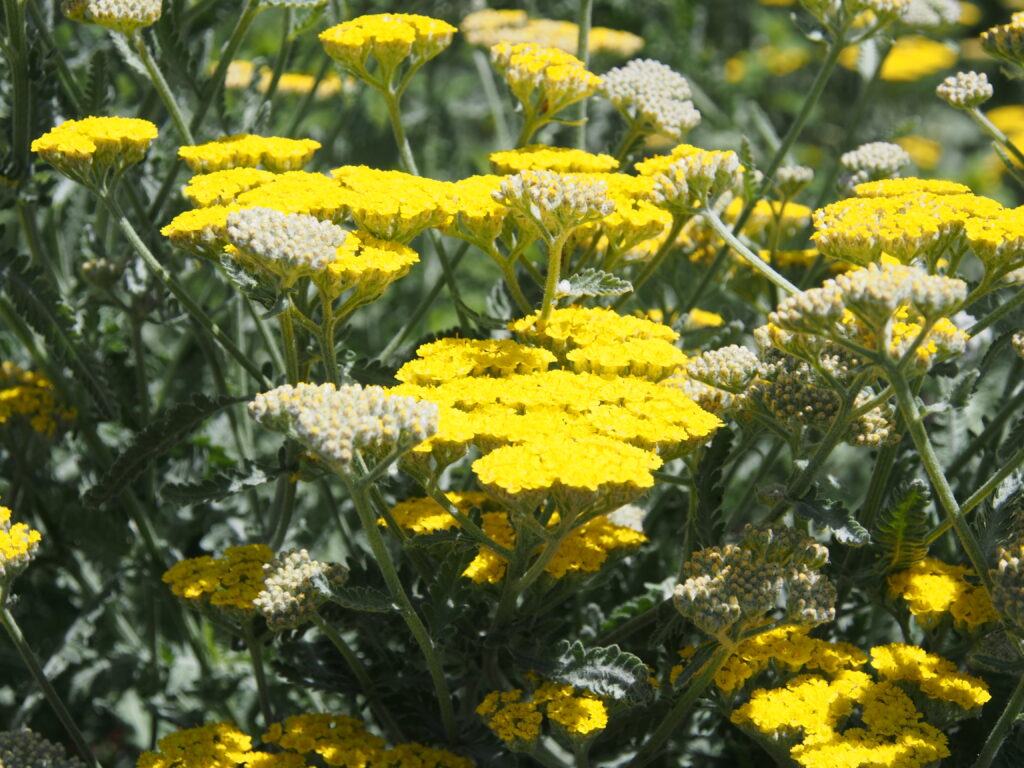Montgomery Village Habitat Haven
BACK TO FULL TOUR
Garden Features
Drought Tolerant
Edible Garden
Graywater System
California Natives
Drip Irrigation
Pesticide Free
Rainwater Harvesting System
Sheet Mulching
Lawn Conversion
Lawn-Free Landscaping
Permeable Surfaces
Wildlife Habitat
Partner: Santa Rosa Water
Located in the heart of Montgomery Village, this drought-tolerant habitat garden has evolved over three decades, beginning in 1995 as overgrown, neglected yards to what is now a lawn-free, permaculture-influenced site including fruit trees and almost entirely California native habitat plants. When the gardening odyssey began, there were two giant magnolia trees in the front yard, and the back garden consisted of two enormous douglas firs, a huge silver-leaf maple, and a saucer magnolia (and lots of invasive ivy!). Beautiful, but quite shady! All have been removed to let the sun shine in, or due to disease, or for making space for additional building.
Changes have taken place gradually, piece by piece, rather than whole yard re-designs. Now there is a bevy of trees for food production and habitat: valley oak, strawberry tree, persimmon, tangerine, lime, orange, apple, pomegranate, nectarine, peach, and there will hopefully be a new frost-tolerant dwarf avocado tree at “tour time”. The multitude of habitat plants were chosen with insects and birds in mind, as well as for color and textural interest.
Beyond hand-watering young plants/trees and occasional watering during our hot summers, only the vegetable garden is watered using drip irrigation. A laundry to landscape gray water system sends water to the backyard, and six rain catchment barrels provide some water for irrigation. There is a small pond with a recirculating fountain in the backyard that provides water to wildlife. My home’s new recirculating hot water system is saving lots of water!
Built in 1950, my renovated home’s energy efficiency measures include solar panels, extensive insulation, heat pump heating and cooling, whole-house and attic fans, and a clothesline.
Having added an ADU (accessory dwelling unit) in 2024, the site now includes a rental with a separate entrance and private patio on the side of the house. This was funded in small part with a CalHFA grant, which I’d recommend to anyone considering the addition of an ADU.
As an environmentalist, my “home work” is a way to not only minimize my footprint, but to show others the possible ways that they can have a positive impact!
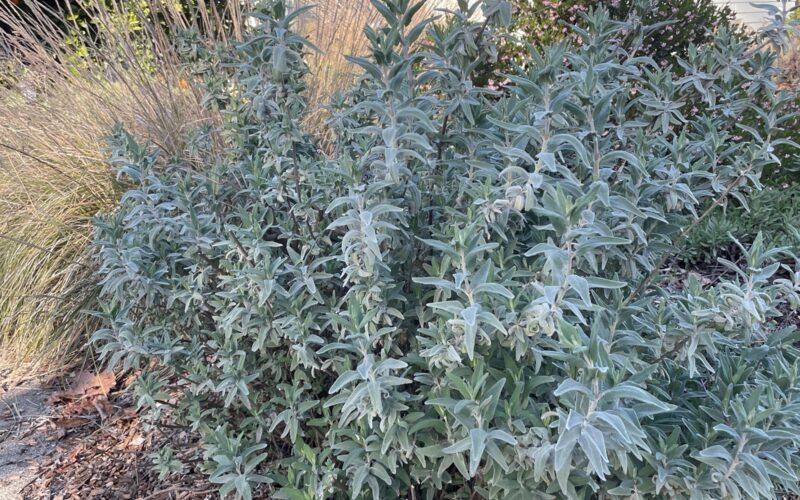
Plants in this Garden
Favorite Plants
Common Woolly Sunflower - Eriophyllum lanatum
Great silvery perennial.
Manzanita - Arctostaphylos
Nectar-provider in cool months, gorgeous trunk color.
Redbud - Cercis occidentalis
Abuzz with native bees in the spring, leaves provide food for bees in summer.
Lemonade sumac - Rhus integrifolia
Handsome, great structure!
White Sage - Salvia apiana
Beautiful hue, flower stalks provide food for birds for many weeks.
Favorite Garden Suppliers
Cal Flora Nursery
2990 Somers Street Fulton
California Native Plant Society Annual Plant Sale
900 Sanford Road Santa Rosa
Recommended Resources
Gaia's Garden: A Guide to Home-Scale Permaculture by Toby Hemenway
Complete Garden Guide to the Native Perennials of California by Glenn Keator
Gardening with a Wild Heart by Judith Larner Lowry
Gardening Tips
Give them Room!
Think carefully about the plants’ sizes at maturity, especially when planting next to hardscape.
Weed Control
Aim for weed control through plantings or mulching rather than with weed cloth. Weed cloth stops weeds for a little while but isn’t a long-term solution. Weeds will absolutely come back, and your plants’ roots will get tangled up in weed cloth. Then, it’s a pain to work with when you try to make changes in the structure of your garden. Better to sheet mulch with biodegradable materials that will improve the soil.
